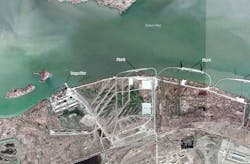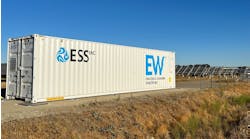A joint venture unit of renewable energy developer Ameresco has been contracted to build a 6.25-MW backup power plant and underground transmission lines on-site at the Military Ocean Terminal Concord (MOTCO) in California.
The on-site generation at the MOTCO facility will include three generators, a 2-MW load bank, 1,200-amp switchgear and 72,000 gallons of fuel storage capacity. The tanks are designed to provide 14 days of fuel.
The HSGS-Ameresco joint venture will oversee the project, which also involves installation of approximately 12,000 linear feet of underground duct bank with power distribution conductors. The project will be integrated with the existing electrical infrastructure at the Military Ocean Terminal, which is interconnected to the Pacific Gas & Electric utility grid.
“We’re thrilled to be selected to construct and enhance the reliability of MOTCO’s energy infrastructure,” Dave McNeil, president and CEO of HSGS-Ameresco, said in a statement. “We take great pride in providing the right and needed measures to supply energy resilience for this important military facility.”
Construction is scheduled to begin in January and completed by early 2026.
Mission-Critical Power at Heart of Microgrid Knowledge
Microgrid 2024 in Baltimore: Join the Revolution in Energy
Military Ocean Terminals are operated by the U.S. Army Surface Deployment and Distribution Command for moving cargo from storage and repair depots to military forward-based units. Military Ocean Terminal Concord is located on the shore of the Sacramento River near where it widens into the Suisun Bay tidal estuary. It originated as a World War II storage depot supplying ships at Port Chicago on the southern end of the estuary.
HSGS-Ameresco was formed as a joint venture of Massachusetts-based Ameresco and Hannah Solar Government Services. The project is funded through the U.S. Department of Defense’s Energy Resilience and Conservation Investment Program.
Ameresco is owner, operator or co-developer of numerous military microgrid projects across the U.S. Among these are the microgrid at Joint Forces Training Base Los Alamitos, California, and a joint venture floating solar microgrid at Fort Bragg in North Carolina.








